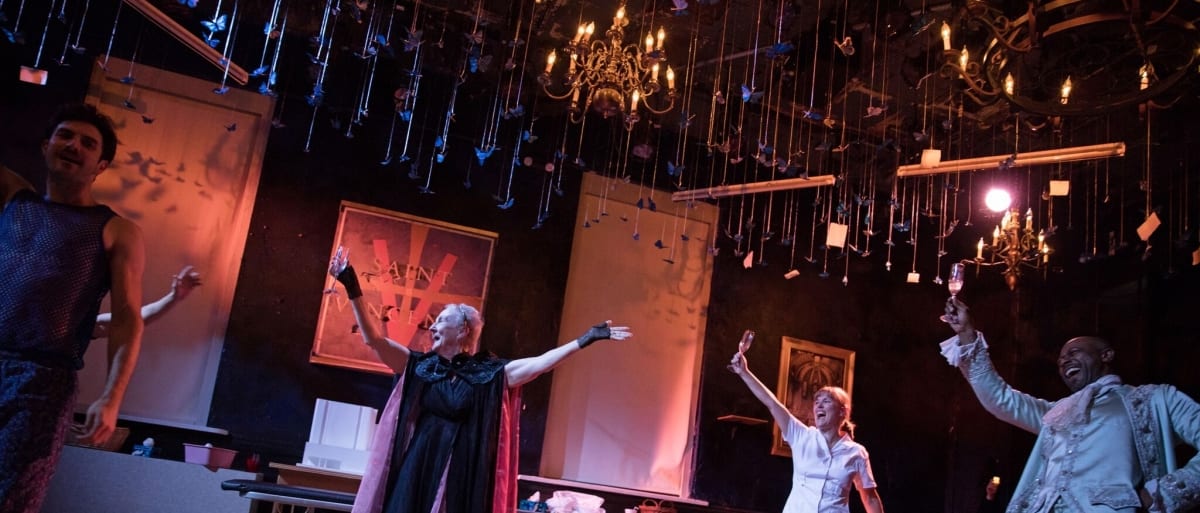Grab your walking shoes and ditch your large bags, folks – this show requires your hands free to hold a candle, applaud, and perhaps wipe some stray tears from your eyes. Novenas for a Lost Hospital is part walking tour, part performance, and part living museum exhibit that makes for an inimitable experience worth a trip from any corner of the city.
Cusi Cram’s work brings to life the 161-year history of St. Vincent’s Hospital, mainly paralleling two of its heydays: the cholera and AIDS epidemics. The audience begins in the courtyard of St. John’s Episcopal church, nestled between lush greenery and the soothing melody of the actors’ song. The luxury condo building (“with ugly windows,” the actors are sure to point out) that now stands in the demolished hospital’s place watches over the gathering from a few blocks away. Clear disdain for the hospital’s replacement aside, there’s an ethereal, joyful feel to the production that’s immediately apparent. The participants aren’t there to lament the hospital’s death – they’re there to celebrate its life with dancing and song that even the audience gets to participate in.
That sentiment moves with the crowd into the intimate Rattlestick Playwrights Theater, where an exhibit of photos, memorabilia, and voiceovers provides real-life glimpses of St. Vincent. The traditional-play segment of Novenas follows, structured aptly into nine parts with the aim of “re-membering” the hospital; that is, by keeping the memory alive, putting its story back together. The artistry of this endeavor is effortless, and Cram’s “re-membering” of disparate moments in time and space is seamless. At times, characters clearly punctuate their existence in heaven, or at least in the onstage world of the hospital. At others, the fourth wall falls and they interact with the audience as though the gap between centuries is but an inch. St. Elizabeth Ann Seton (Kathleen Chalfant), the emcee of sorts, invites us not only to learn about St. Vincent’s, but also to be part of its history while within the theater’s walls.
For a show so steeped in tragic epidemics, Novenas is unexpectedly comedic. Chalfant’s Seton is like the hip grandma of the afterlife, doling out witty jabs at Catholicism (“Who here went to parochial school? That’s my fault”) and bickering with Pierre Toussaint (Alvin Keith) over who gets to appear as a vision to a hospital patient. Kelly McAndrew and Natalie Woolams-Torres shine as a duo of nurses with equally irreverent tongues (“I hope [this event] is a rave”). Although you wouldn’t hear many of Novenas’ lines spoken in a Catholic church, that’s not to say it makes undue light of its subject matter. Cram devotes ample time to discourse on the severity of the AIDS epidemic, America’s troubled healthcare system, and the dicey issue of hospital profitability. It’s clear that the laughable moments are in service of celebrating St. Vincent’s and making sure that, especially if (like me) you knew nothing about the hospital going in, its history is something you want to remember. Or perhaps even “re-member.”
Novenas ends with a somber moment of reflection at the NYC AIDS Memorial Park. By that time, you’ll have come away with a heaping helping of hospital history and, if no less New York cynicism, at least a glimmer of hope to complement it. To “those who care enough to care,” Seton and I propose a toast and an invitation. This show’s for you.

